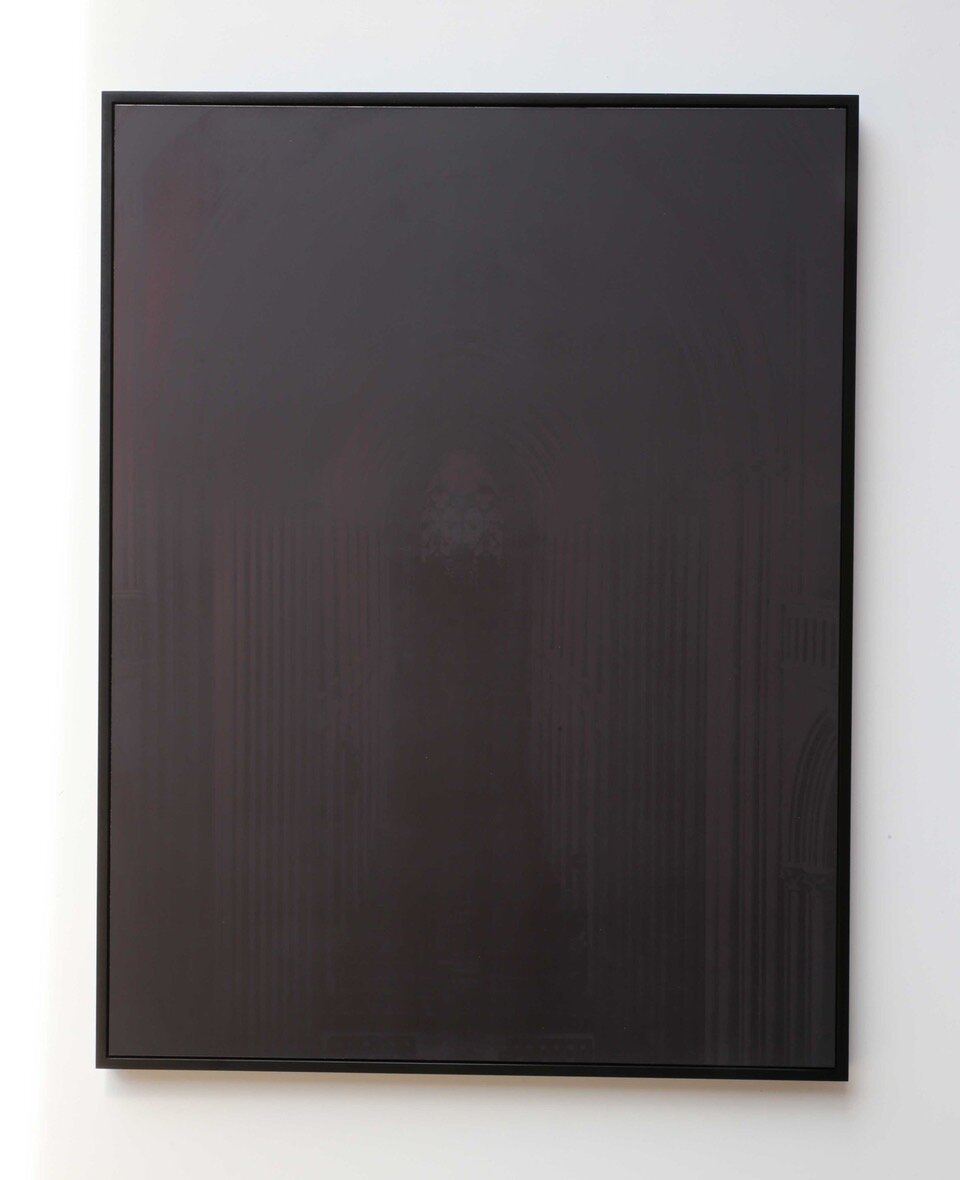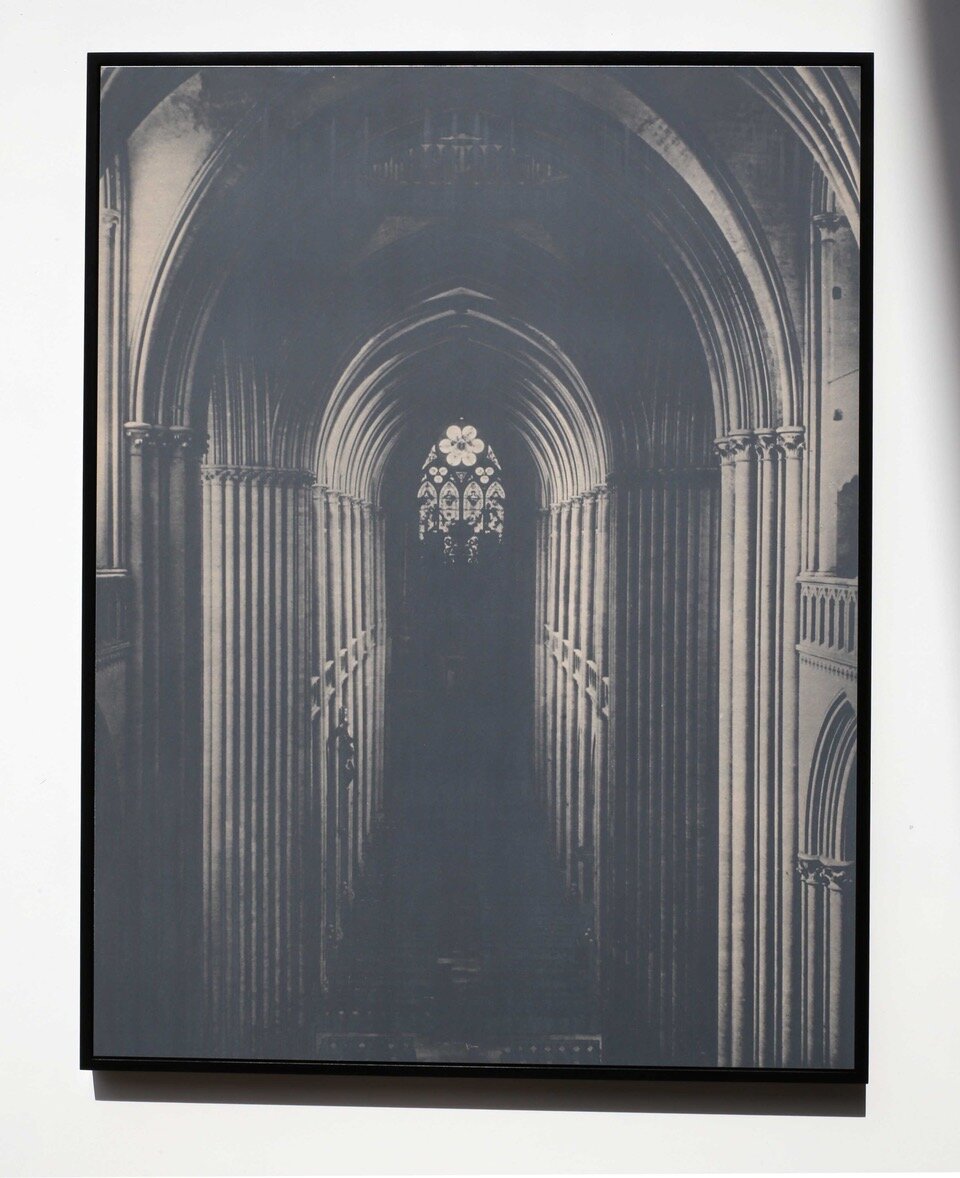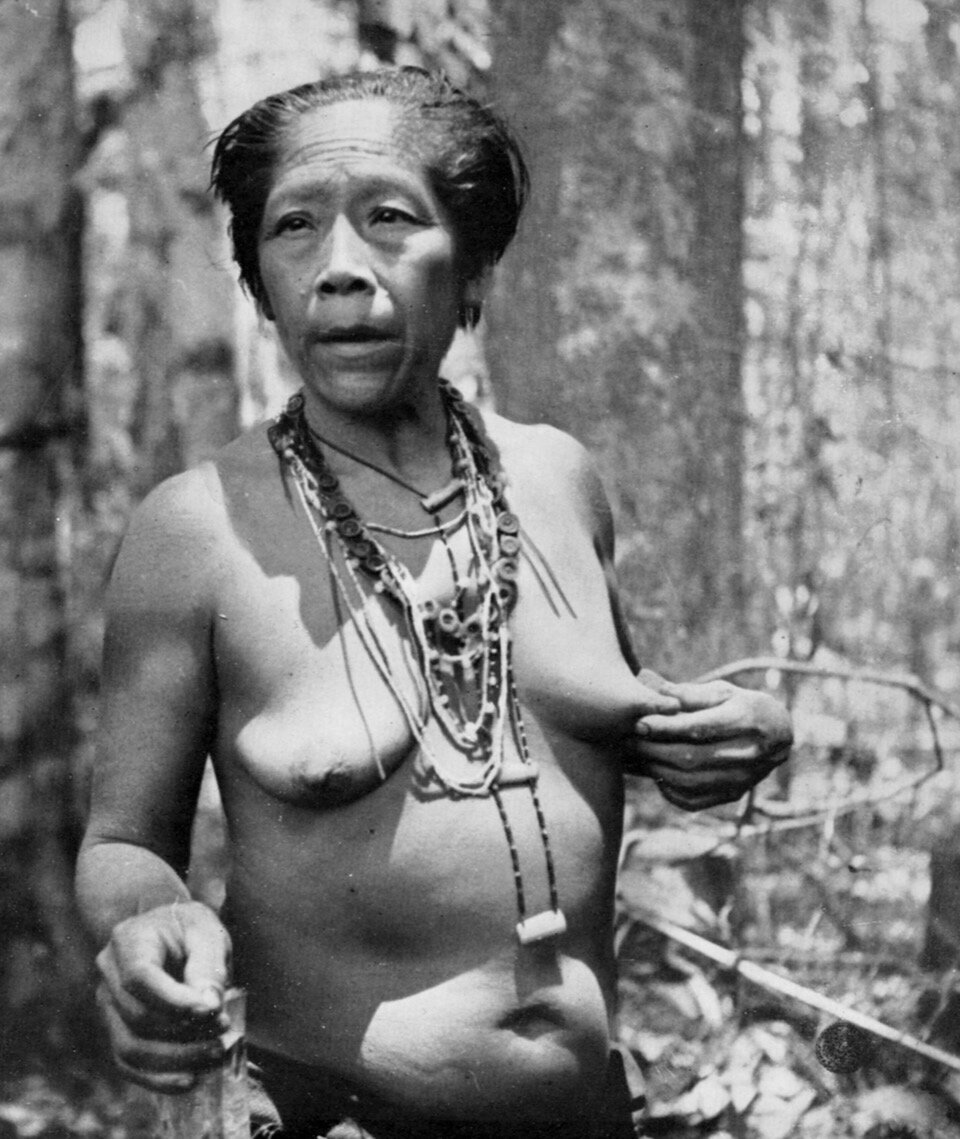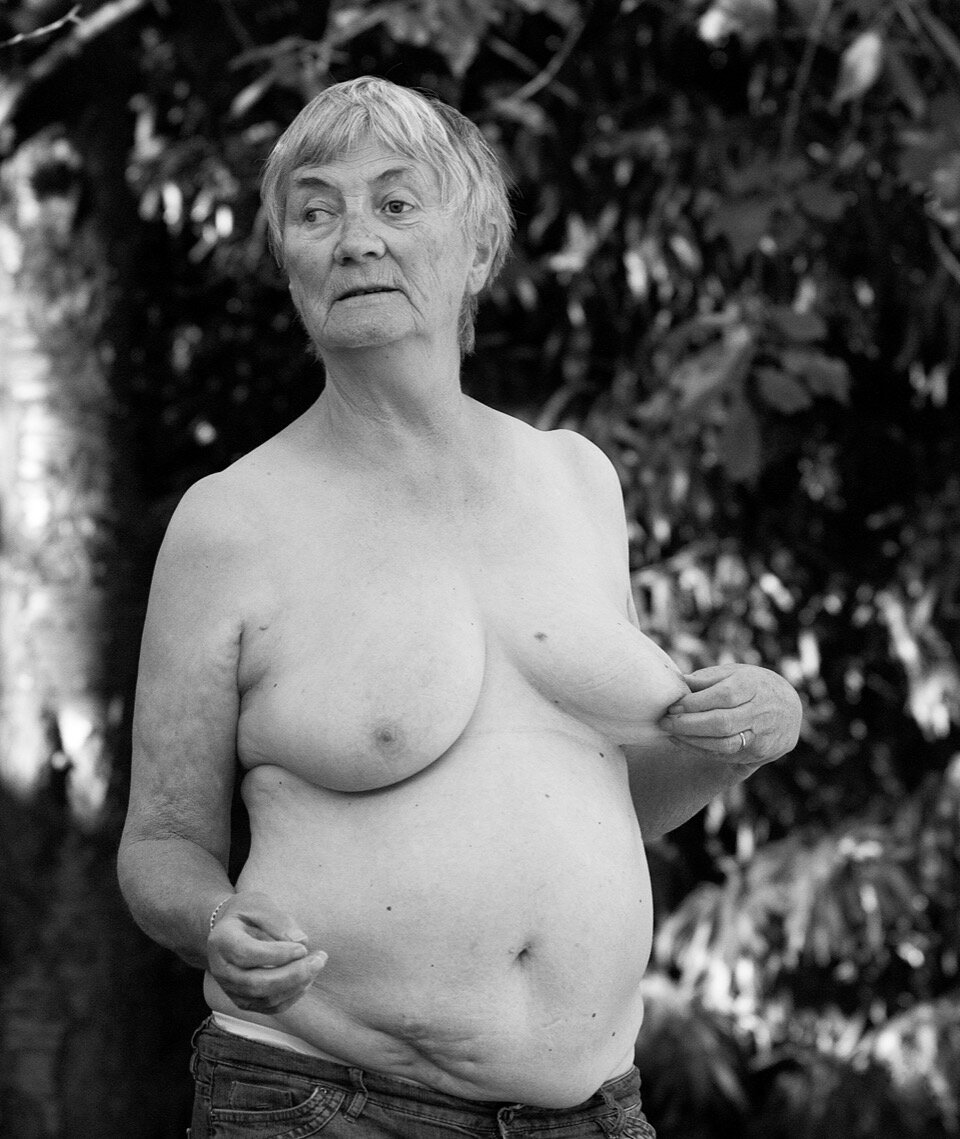Laurence Aëgerter
Laurence Aëgerter (1972) is a French artist, living in the Netherlands since 1993. Her main focus is photography, but she is no stranger to other forms such as installations and video art. Her work is characterized by artistic dialogue with artists from other eras and collaborations with scientists, something that artists don't dare tackle every day. Her motivation extends beyond the usual desire to create something new and extend the language of the medium she works with; she is equally moved by compassion, as is evidenced by her work with persons with dementia.
Let's begin with Photographic Treatment©, a project commissioned by the Art in Societies Foundation. It's unique for its combination of art and science. What can you tell us about this experience? How did you decide to focus on people suffering from dementia?
It was through an invitation by the "Museum of the Mind" in Haarlem that I started research and discovered the very challenging and often distressing experiences of persons with dementia and their carers. I was so touched by the difficulties and complexity of these destinies that I decided to look for a functional way to offer some relief, even if this were only be a drop in an ocean. I believe in the power of images to empower precarious persons by reconnecting to themselves and by connecting to others. Adequate imagery and ways to share it can tremendously improve the well-being of persons with dementia.
This experience has been enormously rich and also quite confronting for me. I have been working for about two years showing and discussing photographs to more than a hundred persons with dementia. My biggest challenge has been to create a work that is both meaningful, with scientific basis, and very functional for persons with dementia, and at the same time keeps its own autonomous qualities as an art work. It is a tricky line to walk but I believe that I managed.
PHT #068, from the series Photographic Treatment ©, 2016; credits Laurence Aëgerter
The Living Image, a short video showing several photographs narrated by an elderly person with dementia is a strikingly effective piece. Her descriptions and details she emphasizes add completely new layers in the photographs, but the very nature of her narrative is both fragmented and meaningful at the same time. What did it mean to you, to witness and create that piece?
The lady with advanced dementia who shared these beautiful and touching moments with me was such a gentle and delicate person. The experience of seeing how she could literally travel to the top of the mountains or play with a baby thanks to the photographs I was showing her (simple black and white A4 prints) was breathtaking. The images were channeling her deepest thoughts and even if sometimes they brought up certain melancholic reflections I could see how much enjoyable it was for her to live these moments. I felt useful and also very grateful. In a fascinating way, the lady constantly switches from one level of perception to another, yet she doesn’t seem to feel lost as she let herself spontaneously be guided by the images. ‘The Living Image’ made it clear to me how intricately intertwined memories and experiences in the black box of our brains are. Nothing is forever lost, but can be out of reach for the most.
A person with dementia discussing about photographs in Photographic Treatment ©, 2016
Cathédrales hermétiques is a series of photographs of cathedrals, yet at the same time, as simple as the premise may be, I find the photographs to be completely transfixing. There is something so magical about the light, the space... even the way the photographs were taken and made. It's almost like a visual essay on permanence and impermanence. Tell us about the origin of the idea for this project and the techniques you used to bring it to life?
I am happy to hear that you enjoy my ‘Cathédrales hermétiques’, thank you for your compliments! I was working on a series of photographs ‘Cathedrals at Sunset’, a variation of seven lightings of a poster from one of Claude Monet’s Cathedrale de Rouen painting through the branches of the tree at my studio. Then I remembered that a friend had given to me a book from the '50s called ‘Cathédrales et Eglises de France’ and I thought that now is the moment to open it up. As a reference, as a spirit, I left it open on my table, and while the day was passing I saw the sun slowly but inexorably passing over the spread of the Cathédrale de Bourges. At a certain point it stopped me completely in my activities, I felt very calm and moved at the same time. I remember I could hear some classical music in my head, structured and light, may be J. S. Bach. I felt this was an experience I should share and made it a priority.
I used different methods and techniques to work through this experience. For the ‘Cathédrales hermétiques’ I silkscreened the photographs with UV sensitive ink. A challenging process as very precarious in outcome, hence quite demanding. The result is although very much worth while: when you look the sun passes over the surface of the work, the cathedral reveals millimeter by millimeter, as if a veil was slowly taken away. It is magical experience. When the shade comes back the photograph turns back to darkness.
Coutances, from the series Cathédrales hermétiques, 2015-2019; Three stages of the photograph, while revealing progressively thanks to the passage of the sunlight
Photography is not the only medium you work with - quite the contrary! How do you relate different topics to different artistic mediums? How do you know if something will be a photo project, a book, an installation... or a séance, even?
Each context, subject and/or object, has its own ‘feel’ and requirements. I chose accordingly for the medium that seems the most adequate for me to express what I would like to share about the source. Most of times it comes as an obvious direction to take and sometimes it takes a while to make decisions. Should, for instance, photographs from an artist’s book also get an existence out of the book, as independent and autonomous images, is a question that I had to ask myself many times, with different outcomes.
Space seems to be quite important for you. Another piece which deals with the topic, albeit in a different way than ‘Cathédrales hermétiques’ is ‘Opening Soon/Opening Now’, where you re-contextualize a former brothel, by turning it into a series of new spaces. It seems like an interesting way to play with meaning and even power structures. Can you share some of your thoughts behind this project?
The metamorphose is a key concept for me, it is one of my favorite modes of escape, a method to investigate, and interrogate and hopefully to transcend an experience. Applying metamorphoses to spaces is a mine of insights and energy. Metamorphosing spaces, with all imperfections along, give lead to an infinity of freedom. It is a physical but mostly mental experience.
Silkscreened poster announcing all performative installations of Opening Soon/Opening Now, 2009; In collaboration with Jennifer Skupin
How does your process look like? How long does it typically take for an idea to gestate into a project?
Some of my ideas arise in a split second, a bit like a vision, others gestate for years. I have experienced different processes like clear ideas that become blurrier and blurrier with time as well as a painstaking journey that ends in relief, in evidence. I tend to develop works in a rhizomic structure, one thing being connected to the next as parts of parts and later losing hierarchy and the bound of chronology. The trigger for my work can be a spoken sentence, a book cover, a painting or a much wider invitation to reflect upon ethical and philosophical matters.
‘Tristes tropiques: illustrations hors texte’ and a few other projects that we mentioned above are all collaborative works. What does it mean to collaborate with other artists, and do you feel that this space for co-constructing of meaning opens up new avenues for artists to move through?
Art is a universal and existential bond that connects me to the rest of the world, a mean to engage in it in search of empowerment for all. I love collaborative projects as I am very curious about other people's input and perspectives. My experience so far has been mostly collaborations with persons not directly linked to the art world by profession. It could evolve but I am cautious as I know that it is very challenging for me to collaborate with another artist. More than the artistic questions, I find all the practical matters around the work the most complicated to deal with long term. At the moment, I enjoy sharing my art practice with the younger generation of artists and with people in challenging and precarious life situations.
From the series Tristes tropiques: illustrations hors texte, 2011
You're a French artist living in The Netherlands. What can you tell us about the space occupied by female artists on respective art scenes?
Around me I see quite a few very gifted and active female artists. My natural way of considering things wouldn’t make a difference between male and female gaze or implication in the world. I personally never felt directly discriminated as an artist, neither as a woman nor as a migrant. Yet if I should believe the statistics I probably have been as I became aware of shocking figures demonstrating the very low percentage of female art in museums, art institutions of all kinds, auction houses, art books etc. I woke up somehow to a very unpleasant feeling because I don’t want to consider my male colleague artists as unfair competitors. I know that we share the toughness and acrobatics of our profession on equal footing. But figures don’t lie and it is urgent for governmental decision makers in art affairs to rectify the balance to a proper equilibrium. Women certainly deserve it.
portrait of Laurence by Haidy Blanch
laurenceaegerter.com














